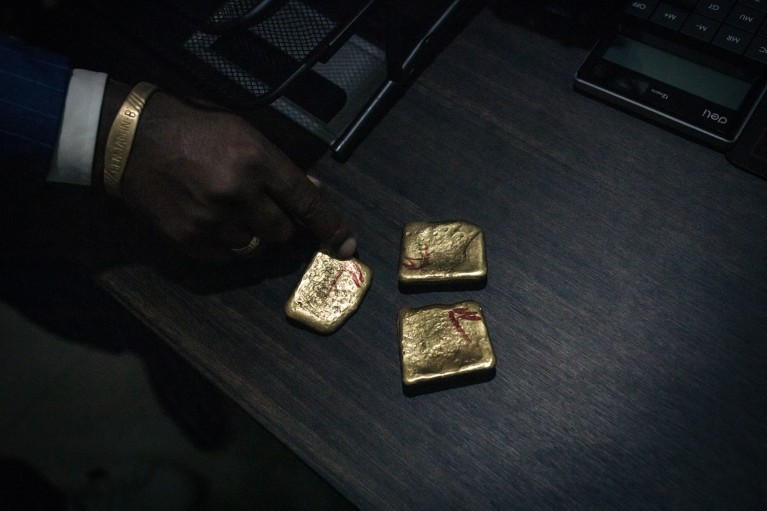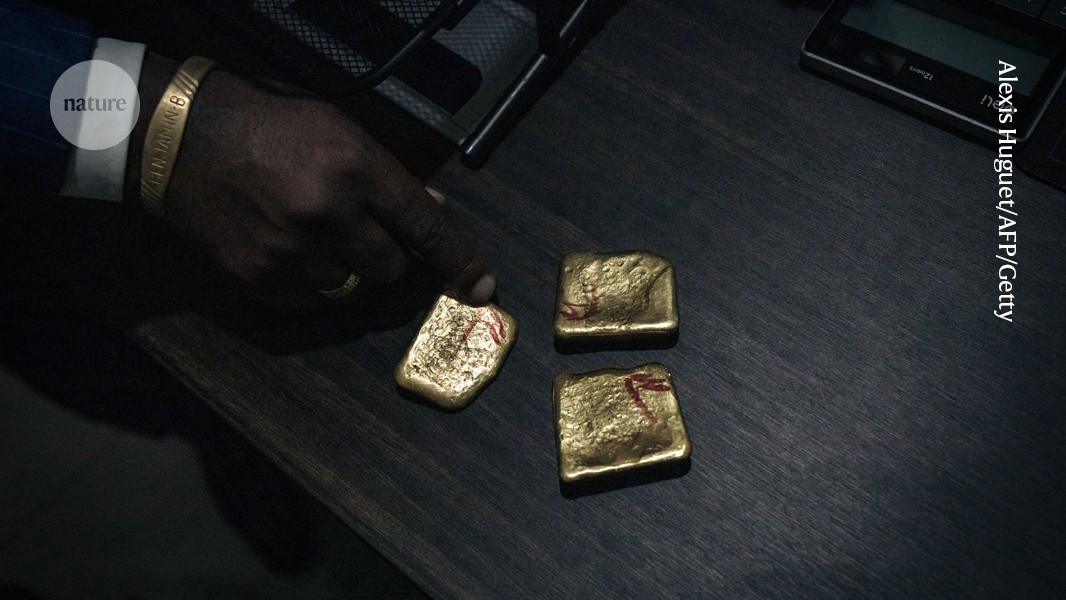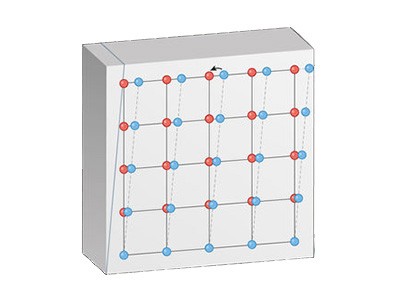
Gold is usually solid up to 1,064 °C, but thin slivers can be briefly heated to many times that without melting.Credit: Alexis Huguet/AFP/Getty
Scientists say that they have heated solid gold for a fleeting moment to a temperature 14 times its melting point before it melts — narrowly skirting the laws of thermodynamics1.
Physicists have thought for decades that it’s impossible to heat gold and other solid materials to more than about three times their melting point without melting them. If the materials were to exceed that threshold while remaining solid, the result would be an ‘entropy catastrophe’, a theoretical situation in which the solid phase of a material would have more entropy, or disorder, than the liquid phase. This would be a violation of the second law of thermodynamics.
But in a paper published today in Nature, scientists describe using a laser to rapidly heat gold to 14 times its melting point — well above the theoretical limit — for a few trillionths of a second before it melts and explodes. The gold atoms reach that temperature before they have time to expand and become disordered, so the result does not violate any laws of thermodynamics, says Tom White, a physicist at the University of Nevada, Reno, and a co-author of the study.
Taking the temperature
If they are heated very carefully, extremely pure samples of some solid materials can be ‘superheated’, attaining temperatures beyond their melting points without melting. Silver, for example, normally melts at 961.8 ºC, but under the right conditions it can be heated to 986 ºC and remain solid. Understanding superheating is relevant for subjects such as the study of molten planetary interiors.
A solid more fluid than a fluid
In 1988, physicists calculated a theoretical limit for superheating, the upshot of which is that no material can be heated to more than about three times its melting point and remain solid2. Beyond that limit, the solid would have higher disorder than the liquid. (To understand why this would be a problem, imagine the smooth, solid ice of a skating rink melting into a pool of liquid water that is somehow even more placid.) Attempts to observe superheated solids have been hindered by the difficulty of measuring temperatures in time intervals shorter than a nanosecond.
The team managed it by heating a 50-nanometre-thick gold sample with a laser until the gold ions were jiggling with kinetic energy. The researchers then shot X-ray photons at the gold sample and measured the shift in their energy as they bounced off the material, to infer the temperature of the gold to within a few thousand degrees Celsius.
Using this measurement method, the team observed that the laser could superheat gold, which has a melting point of 1,337 kelvin (1,064 ºC), to about 19,000 kelvin for a few trillionths of a second.



